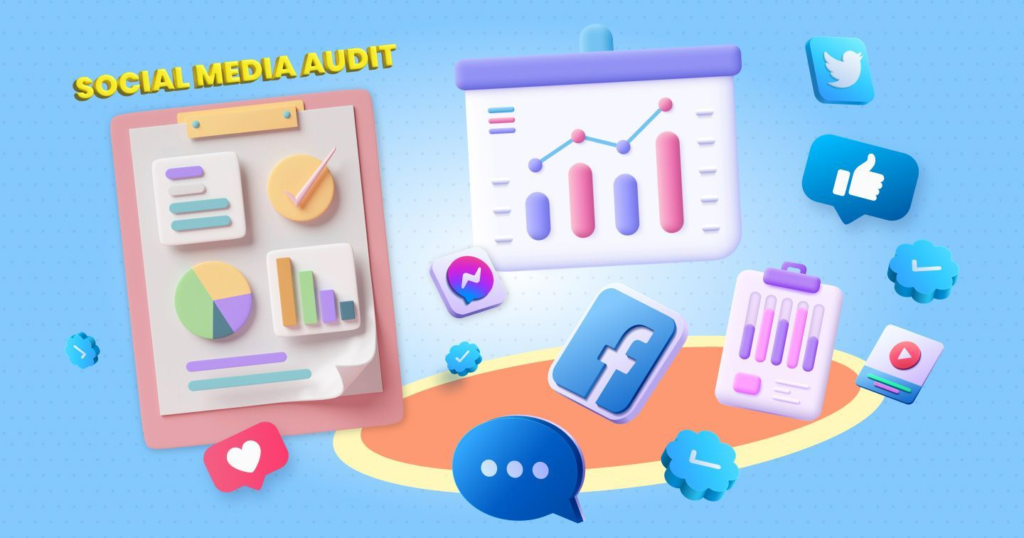As a B2B business, you know the importance of reaching your target audience. Social media can be an effective tool to reach those potential customers and increase brand awareness. With the right strategy in place, you can reach a wide range of people and connect with them in meaningful ways. You can create content that resonates with your target audience, start conversations, and gain insight into what they are looking for. But B2B social media marketing isn’t always easy. It requires knowledge of the platforms themselves as well as understanding what your target audience wants from you.
In this article, we’ll explain how to create an effective B2B social media strategy and how to use the channels available to reach your target audience. We’ll also provide some useful tips on how to make sure that your content is seen by the right people at the right time.
Understanding Your B2B Target Audience

Understanding your target audience is the most important step to a successful B2B social media marketing campaign. Knowing your target audience can help you define the type of content that resonates best with them and tailor your campaigns for maximum impact.
To get started, consider these key questions:
- What are their interests, needs and values?
- What platforms are they most likely to use?
- What topics are they interested in?
- How do they prefer to consume content (text, audio, video)?
- When is the best time to post content?
By taking time to answer these questions, you’ll gain a better understanding of who you’re trying to target with your social media campaigns and be able to create more effective, tailored content. Also, don’t forget to continue monitoring and evaluating your campaigns so you can adapt and refine as needed.
Strategies to Help You Reach More Users
Social media is a great tool for B2B businesses to reach their target audience. Here are a few strategies that you can use to reach more users on social media:
- Create Valuable Content: Content that helps your target audience solve problems and provides valuable insights is key to reaching more users. Use data, case studies, tutorials, demonstrations, and even user-generated content to give your followers something they can use in their own business.
- Identify and Connect with Influencers: Influencer marketing is one of the best ways to reach a wider audience. Find influencers in your industry who have an established following and provide them with tools and resources that they can share on their channels or platforms. This will help you reach more people in an authentic way.
- Use Paid Advertising: Paid advertising on social media is one of the most effective ways to get the word out about your business and attract new customers. Use specific targeting options to find your ideal customers, create ads that are tailored to their needs and interests, and track the performance of your campaigns in order to optimize them for success.
By implementing these strategies, you can maximize your reach on social media while also increasing conversions. Start using these strategies today to grow your presence on social media platforms!
Using the Right Platform in B2B Social Media Marketing

Social media platforms can be complex and overwhelming for any business to tackle, but for B2B companies, the stakes are even higher. There is a variety of platforms out there from Twitter to LinkedIn, Instagram to YouTube. To maximize your social media presence, it’s important to understand which ones will best reach your target audience.
To begin, assess the individual platforms and identify which ones are most likely to capture the attention of potential customers – it’s important to use your research wisely. For example, if you’re trying to reach a corporate-level B2B audience then LinkedIn is likely the best platform for you as it is known for its professional atmosphere. On the other hand, if you’re targeting start-ups then Twitter may be more appropriate due its more casual nature.
Once you have decided on the right platform for your B2B business, focus on delivering content that resonates with your target audience. Develop content that speaks directly to their interests and needs – whether that be industry insights or product updates – in order to keep them engaged and informed about your brand or product in meaningful ways.
By carefully crafting compelling content tailored specifically towards each social media platform, you can ensure that you’re getting the maximum engagement from your target audience across every channel.
Creating Content That Resonates With Your Audience

Creating content that resonates with your B2B target audience can be tricky, but it is essential to reach your goals. It is important to consider what type of content will interest them and how to best present it so that it aligns with their needs. Here are a few tips for creating content that will effectively engage with your target audience:
- Know Your Audience: In order to create content that resonates with your audience, you need to know who you’re targeting. Research into their interests, values, and motivations can help you identify the topics and formats that will be of interest to them.
- Choose Quality Over Quantity: Quantity isn’t everything when it comes to content creation—quality is key. Focus on creating high-quality pieces of content that provide value to your target audience or solve a problem that they face.
- Use Visuals: Visuals are a great way to engage with audiences on social media channels such as Instagram, Twitter and LinkedIn. Use visuals such as images, videos and infographics where possible to add a visual element to your content and make it more memorable for viewers.
- Mix Up Formats: Variety is the spice of life! Utilizing different formats of content – from blog posts, to podcasts or webinars – can help keep things interesting while still providing value for viewers.
By following these tips, you can create content that speaks directly to your target audience’s needs and interests in an engaging way—boosting engagement with potential customers and increasing conversions over time!
The Importance of Tracking and Analytics
No matter how you approach B2B social media marketing, tracking and analytics are essential to determine if your strategies are successful and measure progress. Accurate data will provide valuable insights into how to approach future campaigns.
With analytics, you can identify key trends in customer behavior which can help you target the right prospects and grow your brand’s reach. You can track metrics such as:
- Engagement Rate: This measures the level of engagement among customers with your posts, such as likes and comments.
- Reach: Reach is a measure of how many people your content is reaching.
- Click Through Rate (CTR): This metric measures how many people who saw your post actually followed the link in it to visit your website.
- Conversion Rate: This metric measures how many visitors to your website actually became customers or made a purchase.
By tracking these metrics for each post, you’ll be able to identify which strategies are working best for your business, as well as which ones may need improvement or adjustment. With this information, you can tweak and refine your campaigns for maximum effectiveness.
Measurement and Optimization for Success

Getting the most out of your social media marketing efforts means having a good understanding of what is working (and what isn’t). The metrics that matter most vary from platform to platform and company to company, but there are a few key indicators that can shed light on the success of your campaigns.
On Facebook, look at the reach, engagement, and clicks as well as organic performance and paid advertising. You’ll also want to pay attention to how people are interacting with content, such as whether they’re commenting, liking or sharing.
For Twitter, you should be tracking follower growth, engagement rate (the ratio of followers who interact with your tweets), retweet rate (the percentage of followers who retweet your content), website link clicks and earned media value (the estimated cost of any earned media generated through your tweets).
For an in-depth picture of performance on LinkedIn, measure website visits that come from the platform, profile views by members in target markets, post views, page likes/follows and comments.
By measuring these metrics regularly and making adjustments accordingly – such as adjusting formats or content topics – you can ensure that your B2B social media marketing campaigns are reaching their goals.
Conclusion
In conclusion, it is clear that B2B businesses must include social media as a key component of their marketing mix. To be successful, businesses should set clear objectives, create compelling content, use the right platforms for reaching the intended target audience, and measure the effectiveness of their social media efforts. Social media provides an excellent opportunity for B2B businesses to engage with potential customers, build relationships, generate leads, and ultimately drive conversions. With the right strategies and tactics in place, businesses can reap the rewards of an effective social media presence.

